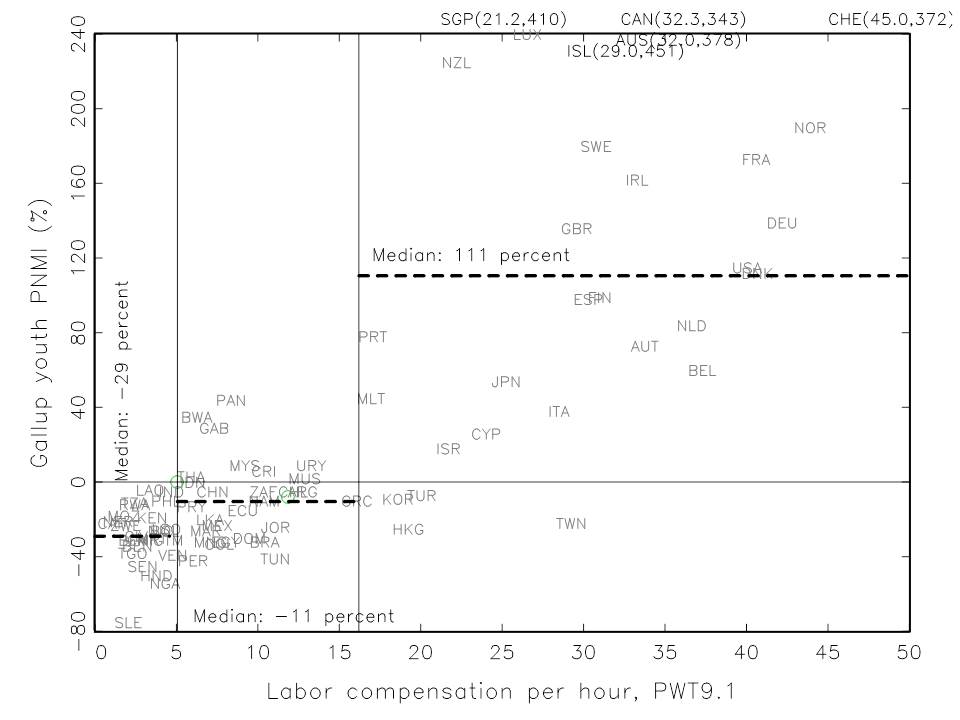I completed a paper (ao-authored with Farah Hani) for the Oxford Research Encyclopedia: Economics and Finance on the economics of international migration. A lot of this was review of the wage differentials (like the Place Premium) but there were three new things.
First, this was the first time I had looked at the Gallup Survey data on whether people, if they were given the choice, would like to move permanently to another country and if so, which country. They then calculate the “net migration change” in the world if everyone who wanted to move did move to their first choice for all population and for youth. The graph is a scatter plot of that with the estimates of labor compensation per worker from the Penn World Tables 9.1 and is divided by terciles of wages (in ‘000s). The oil-rich countries (e.g. Kuwait, Saudi Arabia, etc.) are excluded. To make the graph more readable I compress some of the smaller high attractiveness countries, like Canada whose youth population would increase 343 percent. The median youth population loss in the bottom tercile is 29 percent and the median gain for highest tercile of wage countries is 111 percent–and the USA is right on the median. The middle tercile has very high variance as some regional destinations (e.g. Botswana, Panama) gain alot and some would lose more than 40 percent (Tunisia, Peru).

The second new thing to this paper was to revisit why labor mobility across countries has not been a bigger part of the development agenda (whereas labor mobility within countries, rural to urban, has always been seen as a part of the development process). Besides the obvious political explanation (rich countries didn’t want it to be) there is the point that if one’s growth theory had rapid convergence of TFP (as would be the case if TFP were primarily driven by easily portable codifiable knowledge of the type that “knowledge as an externality”) then accumulated factors (capital and human capital) should move to (newly) high TFP and low factor abundance places. However, and this is one of the biggest facts we learned about development from accumulating data and experiences with growth over time, TFP did not converge. Rather in most regions of the world TFP growth was slower than in the OECD. A lack of TFP convergence puts labor mobility back on the table in a big unavoidable way.
The third was a single paper but it is one of the most striking and borderline macabre economics papers I have seen. It is a “field experiment” by Bah and Batista about the expressed desires of youth in rural Gambia to move illegally to Europe. 46 percent express a desire to migrate illegally to Europe even though they estimate the risk of death is very high. When provided in the field experiment with the “correct” estimate that the trip involved a 1 in 5 chance in death the expressed desire to attempt the journey went up. The fact that about half of rural youth say they would risk a 1 in 5 chance of death to migrate illegally to Europe speaks volumes.
